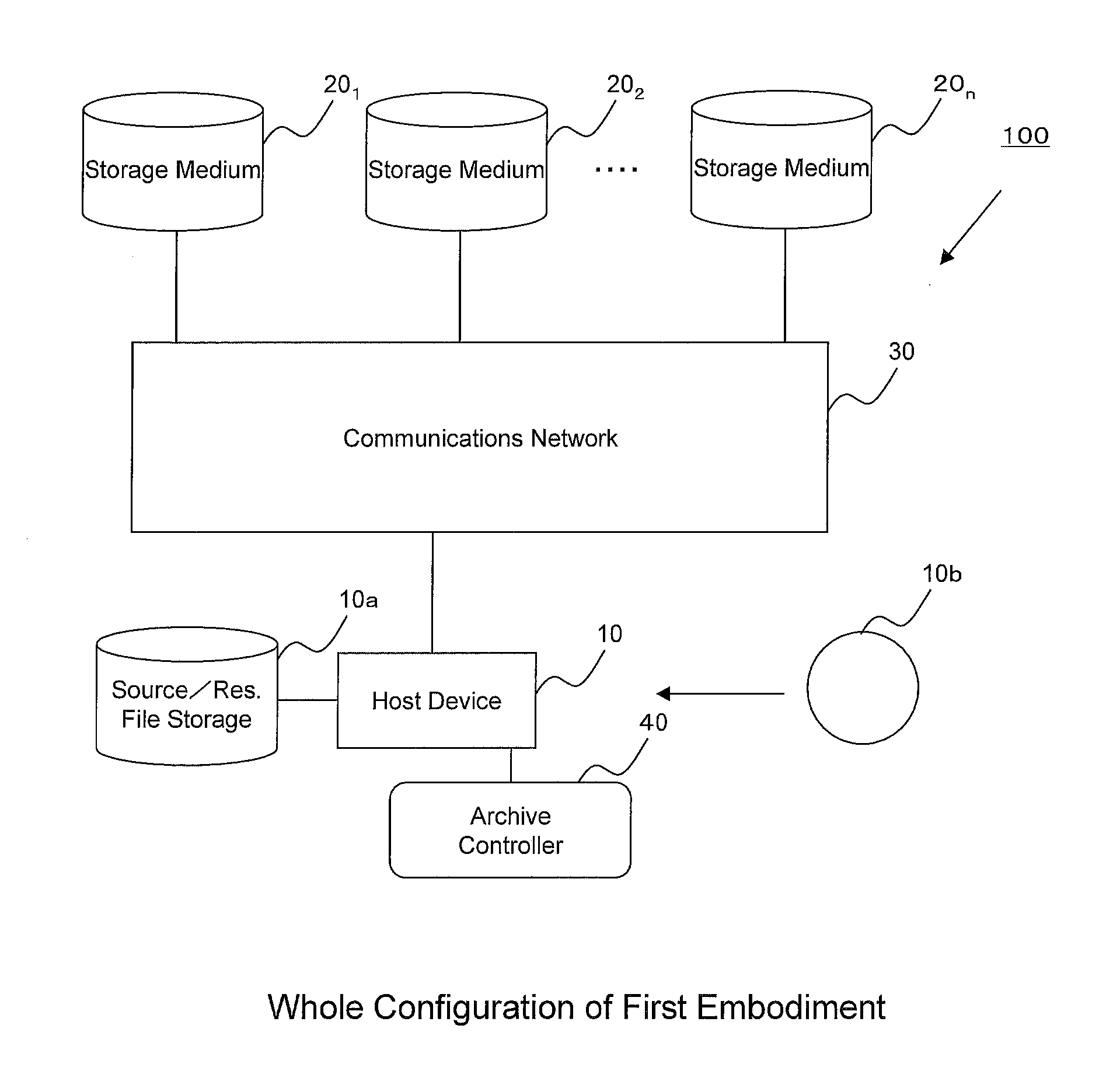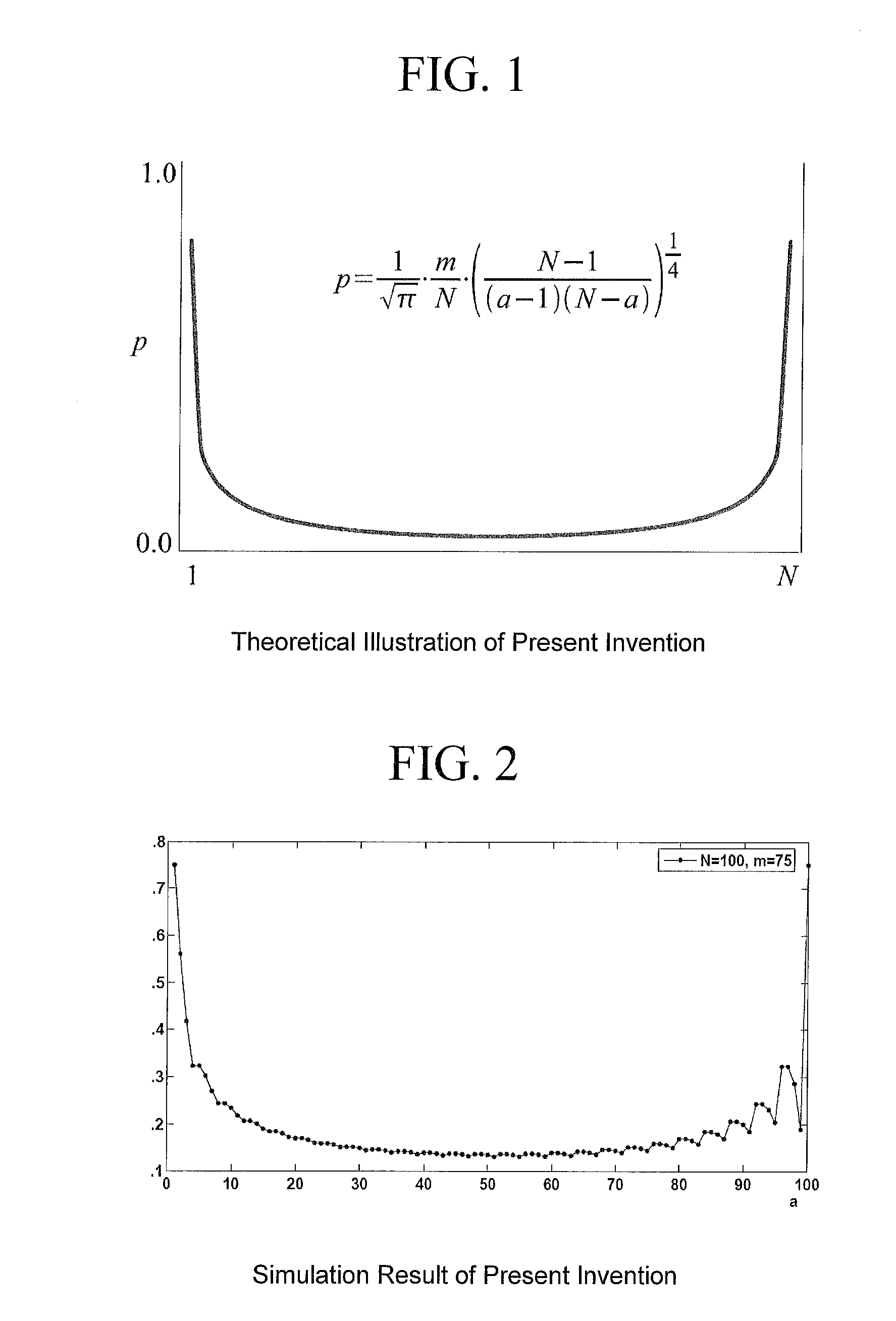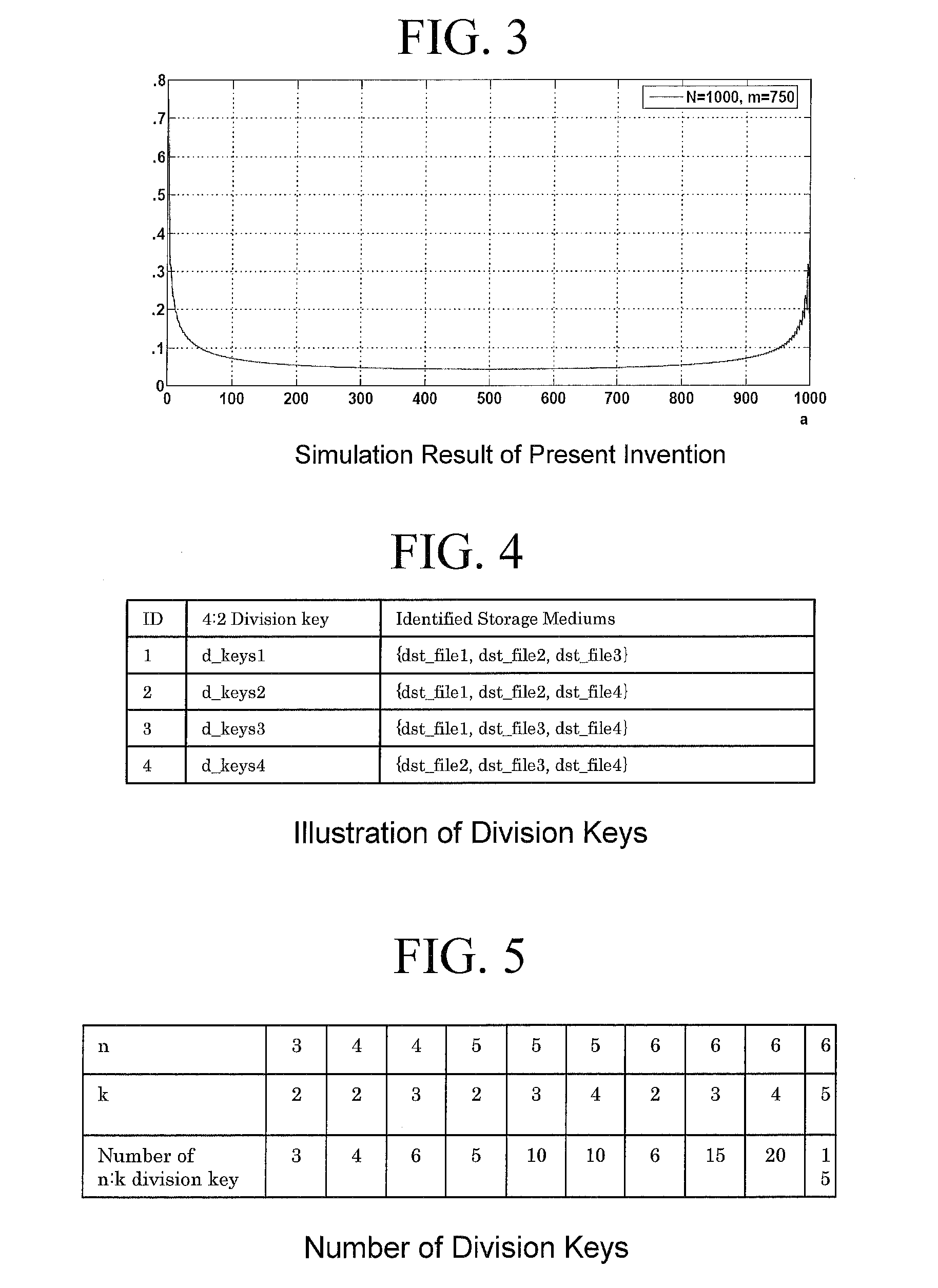Distributed archive system, data archive device, and data restoring device
a technology of data archive and data restoration, applied in the direction of error detection/correction, digital transmission, instruments, etc., can solve the problems of data availability and consistency problems, difficult to prove security, and high computational cost of modular exponentiation calculation for each data segment, etc., to achieve high-speed processing and security
- Summary
- Abstract
- Description
- Claims
- Application Information
AI Technical Summary
Benefits of technology
Problems solved by technology
Method used
Image
Examples
first embodiment
[0064]The first embodiment of the present invention is what has the principled design of the invention implemented onto. Here, prior to description of the configuration and operation of the embodiment, the principle of the invention is described.
[0065]In an archive system 100 (FIG. 6) according to the first embodiment, for providing the n:k threshold availability and the n:k threshold security, data fragments are sequentially cut out from data to be archived, and each date fragment is redundantly recorded on (n−k+1) storage mediums among m ones. An n:k division key is introduced as information identifying which (n−k+1) storage mediums are selected among n ones. The n:k dividing key is allotted with identifier expressed numerically, and identifies (n−k+1) storage mediums. The data fragment is redundantly stored on (n−k+1) storage mediums independently and randomly identified and selected from the n storage mediums by outputting n:k division keys independently and randomly.
[0066]FIG. ...
second embodiment
[0088]Next, an archive system according to the second embodiment of the present invention is descried. In the second embodiment, the length of the data fragment is determined randomly each time in order to enhance the security.
[0089]In contrast from the first embodiment, the output from the key random number generator 445 determines the length of a data fragment in addition to the identifier of the division key. In particular, the output of the key random number generator 445 is composed of a pair of one natural number ip for setting the division key and another natural number setting the length of the data fragment.
[0090]FIG. 14 and FIG. 15 illustrate process examples of the archive system on the smart card and host device 10 respectively.
[0091]FIG. 14 shows the procedure of a process example on the smart card.
[Step S41]: An identifier crr_fid which specifies a data file to be divided is received from the host device 10.
[Step S42]: The seed random number generator 443 is called to ...
third embodiment
[0094]Next, the third embodiment of the present invention is described. In the third embodiment, dummy data units are archived at random timing to enhance the security.
[0095]In contrast form the first embodiment, the output from the key random number generator 445 determines whether or not a dummy data is inserted or not, in addition to the identifier of the division key. In particular, the output of the key random number generator 445 is composed of a pair of a natural number ip for setting the division key and a logical value rp setting the insertion of a dummy data. The logical value is a true or a false, and the probability distribution is not necessarily uniform (the probability that a truth (or a false) will be outputted is not necessarily ½).
[0096]FIG. 16 shows the procedure of a process example on the smart card.
[Step S61]: An identifier crr_fid which specifies a data file to be divided is received by the smart card from the host device 10.
[Step S62]: The seed random number ...
PUM
 Login to View More
Login to View More Abstract
Description
Claims
Application Information
 Login to View More
Login to View More - R&D
- Intellectual Property
- Life Sciences
- Materials
- Tech Scout
- Unparalleled Data Quality
- Higher Quality Content
- 60% Fewer Hallucinations
Browse by: Latest US Patents, China's latest patents, Technical Efficacy Thesaurus, Application Domain, Technology Topic, Popular Technical Reports.
© 2025 PatSnap. All rights reserved.Legal|Privacy policy|Modern Slavery Act Transparency Statement|Sitemap|About US| Contact US: help@patsnap.com



